
THOMAS'CALCULUS EARLY TRANS. MYLABSPLUS
14th Edition
ISBN: 9780135420683
Author: Hass
Publisher: PEARSON
expand_more
expand_more
format_list_bulleted
Question
Chapter 6, Problem 15AAE
a.
To determine
Calculate the centroid of the region bounded by two concentric circles and the coordinate axes in the first quadrant.
b.
To determine
Obtain the coordinate limits of the centroid if
Expert Solution & Answer
Want to see the full answer?
Check out a sample textbook solution
Students have asked these similar questions
solve this question, step by step, quick
solve this question, step by step, quick
solve this question, step by step, quick
Chapter 6 Solutions
THOMAS'CALCULUS EARLY TRANS. MYLABSPLUS
Ch. 6.1 - Find the volumes of the solids in Exercises...Ch. 6.1 - Find the volumes of the solids in Exercises...Ch. 6.1 - Find the volumes of the solids in Exercises...Ch. 6.1 - Find the volumes of the solids in Exercises...Ch. 6.1 - Find the volumes of the solids in Exercises...Ch. 6.1 - Find the volumes of the solids in Exercises...Ch. 6.1 - Find the volumes of the solids in Exercises...Ch. 6.1 - Find the volumes of the solids in Exercises...Ch. 6.1 - Find the volumes of the solids in Exercises...Ch. 6.1 - Find the volumes of the solids in Exercises...
Ch. 6.1 - Find the volume of the given right tetrahedron....Ch. 6.1 - Prob. 12ECh. 6.1 - A twisted solid A square of side length s lies in...Ch. 6.1 - Cavalieri’s principle A solid lies between planes...Ch. 6.1 - Intersection of two half-cylinders Two...Ch. 6.1 - Gasoline in a tank A gasoline tank is in the shape...Ch. 6.1 - Prob. 17ECh. 6.1 - Prob. 18ECh. 6.1 - Prob. 19ECh. 6.1 - Prob. 20ECh. 6.1 - Find the volumes of the solids generated by...Ch. 6.1 - Find the volumes of the solids generated by...Ch. 6.1 - Find the volumes of the solids generated by...Ch. 6.1 - Find the volumes of the solids generated by...Ch. 6.1 - Find the volumes of the solids generated by...Ch. 6.1 - Find the volumes of the solids generated by...Ch. 6.1 - Find the volumes of the solids generated by...Ch. 6.1 - Find the volumes of the solids generated by...Ch. 6.1 - Find the volumes of the solids generated by...Ch. 6.1 - Find the volumes of the solids generated by...Ch. 6.1 - In Exercises 31 and 32, find the volume of the...Ch. 6.1 - In Exercises 31 and 32, find the volume of the...Ch. 6.1 - Find the volumes of the solids generated by...Ch. 6.1 - Find the volumes of the solids generated by...Ch. 6.1 - Find the volumes of the solids generated by...Ch. 6.1 - Find the volumes of the solids generated by...Ch. 6.1 - Find the volumes of the solids generated by...Ch. 6.1 - Find the volumes of the solids generated by...Ch. 6.1 - Prob. 39ECh. 6.1 - Find the volumes of the solids generated by...Ch. 6.1 - Find the volumes of the solids generated by...Ch. 6.1 - Find the volumes of the solids generated by...Ch. 6.1 - Find the volumes of the solids generated by...Ch. 6.1 - Find the volumes of the solids generated by...Ch. 6.1 - Find the volumes of the solids generated by...Ch. 6.1 - Find the volumes of the solids generated by...Ch. 6.1 - In Exercises 47-50, find the volume of the solid...Ch. 6.1 - In Exercises 47-50, find the volume of the solid...Ch. 6.1 - In Exercises 47-50, find the volume of the solid...Ch. 6.1 - In Exercises 47-50, find the volume of the solid...Ch. 6.1 - In Exercises 51 and 52, find the volume of the...Ch. 6.1 - Prob. 52ECh. 6.1 - Find the volume of the solid generated by...Ch. 6.1 - Prob. 54ECh. 6.1 - Find the volume of the solid generated by...Ch. 6.1 - Prob. 56ECh. 6.1 - Prob. 57ECh. 6.1 - Prob. 58ECh. 6.1 - Prob. 59ECh. 6.1 - Prob. 60ECh. 6.1 - Prob. 61ECh. 6.1 - Designing a plumb bob Having been asked to design...Ch. 6.1 - Prob. 63ECh. 6.1 - Prob. 64ECh. 6.1 - Prob. 65ECh. 6.1 - Prob. 66ECh. 6.2 - In Exercises 1–6, use the shell method to find the...Ch. 6.2 - In Exercises 1–6, use the shell method to find the...Ch. 6.2 - In Exercises 1–6, use the shell method to find the...Ch. 6.2 - In Exercises 1–6, use the shell method to find the...Ch. 6.2 - In Exercises 1–6, use the shell method to find the...Ch. 6.2 - In Exercises 1–6, use the shell method to find the...Ch. 6.2 - Use the shell method to find the volumes of the...Ch. 6.2 - Use the shell method to find the volumes of the...Ch. 6.2 - Use the shell method to find the volumes of the...Ch. 6.2 - Use the shell method to find the volumes of the...Ch. 6.2 - Use the shell method to find the volumes of the...Ch. 6.2 - Use the shell method to find the volumes of the...Ch. 6.2 - Prob. 13ECh. 6.2 - Prob. 14ECh. 6.2 - Prob. 15ECh. 6.2 - Prob. 16ECh. 6.2 - Use the shell method to find the volumes of the...Ch. 6.2 - Prob. 18ECh. 6.2 - Use the shell method to find the volumes of the...Ch. 6.2 - Prob. 20ECh. 6.2 - Prob. 21ECh. 6.2 - Prob. 22ECh. 6.2 - Prob. 23ECh. 6.2 - In Exercises 23–26, use the shell method to find...Ch. 6.2 - In Exercises 23–26, use the shell method to find...Ch. 6.2 - Prob. 26ECh. 6.2 - Prob. 27ECh. 6.2 - Prob. 28ECh. 6.2 - For some regions, both the washer and shell...Ch. 6.2 - Prob. 30ECh. 6.2 - In Exercises 31–36, find the volumes of the solids...Ch. 6.2 - Prob. 32ECh. 6.2 - In Exercises 31–36, find the volumes of the solids...Ch. 6.2 - Prob. 34ECh. 6.2 - Prob. 35ECh. 6.2 - Prob. 36ECh. 6.2 - The region in the first quadrant that is bounded...Ch. 6.2 - The region in the first quadrant that is bounded...Ch. 6.2 - The region shown here is to be revolved about the...Ch. 6.2 - The region shown here is to be revolved about the...Ch. 6.2 - Prob. 41ECh. 6.2 - Prob. 42ECh. 6.2 - Prob. 43ECh. 6.2 - Prob. 44ECh. 6.2 - Prob. 45ECh. 6.2 - Prob. 46ECh. 6.2 - Prob. 47ECh. 6.2 - Prob. 48ECh. 6.2 - Consider the region R bounded by the graphs of y =...Ch. 6.2 - Consider the region R given in Exercise 49. If the...Ch. 6.3 - Find the lengths of the curves in Exercises 1–16....Ch. 6.3 - Prob. 2ECh. 6.3 - Find the lengths of the curves in Exercises 1–16....Ch. 6.3 - Find the lengths of the curves in Exercises 1–16....Ch. 6.3 - Find the lengths of the curves in Exercises 1–16....Ch. 6.3 - Find the lengths of the curves in Exercises 1–16....Ch. 6.3 - Prob. 7ECh. 6.3 - Prob. 8ECh. 6.3 - Find the lengths of the curves in Exercises 1–16....Ch. 6.3 - Find the lengths of the curves in Exercises 1–16....Ch. 6.3 - Prob. 11ECh. 6.3 - Prob. 12ECh. 6.3 - Find the lengths of the curves in Exercises 1–16....Ch. 6.3 - Prob. 14ECh. 6.3 - Prob. 15ECh. 6.3 - Prob. 16ECh. 6.3 - Prob. 17ECh. 6.3 - Prob. 18ECh. 6.3 - In Exercises 17-24, do the following.
Set up an...Ch. 6.3 - Prob. 20ECh. 6.3 - Prob. 21ECh. 6.3 - In Exercises 17-24, do the following.
Set up an...Ch. 6.3 - Prob. 23ECh. 6.3 - Prob. 24ECh. 6.3 - Find a curve with a positive derivative through...Ch. 6.3 - Prob. 26ECh. 6.3 - Prob. 27ECh. 6.3 - Prob. 28ECh. 6.3 - Prob. 29ECh. 6.3 - Prob. 30ECh. 6.3 - Prob. 31ECh. 6.3 - Prob. 32ECh. 6.3 - Prob. 33ECh. 6.3 - Prob. 34ECh. 6.3 - Prob. 35ECh. 6.3 - Prob. 36ECh. 6.3 - Prob. 37ECh. 6.3 - Prob. 38ECh. 6.4 - In Exercises 1-8:
Set up an integral for the area...Ch. 6.4 - Prob. 2ECh. 6.4 - Prob. 3ECh. 6.4 - Prob. 4ECh. 6.4 - In Exercises 1-8:
Set up an integral for the area...Ch. 6.4 - Prob. 6ECh. 6.4 - Prob. 7ECh. 6.4 - Prob. 8ECh. 6.4 - Prob. 9ECh. 6.4 - Prob. 10ECh. 6.4 - Prob. 11ECh. 6.4 - Find the surface area of the cone frustum...Ch. 6.4 - Find the areas of the surfaces generated by...Ch. 6.4 - Prob. 14ECh. 6.4 - Find the areas of the surfaces generated by...Ch. 6.4 - Find the areas of the surfaces generated by...Ch. 6.4 - Find the areas of the surfaces generated by...Ch. 6.4 - Prob. 18ECh. 6.4 - Find the areas of the surfaces generated by...Ch. 6.4 - Prob. 20ECh. 6.4 - Find the areas of the surfaces generated by...Ch. 6.4 - Find the areas of the surfaces generated by...Ch. 6.4 - Find the areas of the surfaces generated by...Ch. 6.4 - Prob. 24ECh. 6.4 - Testing the new definition Show that the surface...Ch. 6.4 - Prob. 26ECh. 6.4 - Prob. 27ECh. 6.4 - Prob. 28ECh. 6.4 - The shaded band shown here is cut from a sphere of...Ch. 6.4 - Here is a schematic drawing of the 90-ft dome used...Ch. 6.4 - Prob. 31ECh. 6.4 - The surface of an astroid Find the area of the...Ch. 6.5 - Prob. 1ECh. 6.5 - Prob. 2ECh. 6.5 - Spring constant It took 1800 J of work to stretch...Ch. 6.5 - Stretching a spring A spring has a natural length...Ch. 6.5 - Prob. 5ECh. 6.5 - Prob. 6ECh. 6.5 - Subway car springs It takes a force of 21,714 lb...Ch. 6.5 - Prob. 8ECh. 6.5 - Prob. 9ECh. 6.5 - Leaky sandbag A bag of sand originally weighing...Ch. 6.5 - Lifting an elevator cable An electric elevator...Ch. 6.5 - Prob. 12ECh. 6.5 - Leaky bucket Assume the bucket in Example 4 is...Ch. 6.5 - Prob. 14ECh. 6.5 - Pumping water The rectangular tank shown here,...Ch. 6.5 - Prob. 16ECh. 6.5 - Pumping oil How much work would it take to pump...Ch. 6.5 - Prob. 18ECh. 6.5 - Emptying a tank A vertical right-circular...Ch. 6.5 - Prob. 20ECh. 6.5 - The graph of y = x2 on 0 ≤ x ≤ 2 is revolved about...Ch. 6.5 - Prob. 22ECh. 6.5 - Emptying a water reservoir We model pumping from...Ch. 6.5 - Prob. 24ECh. 6.5 - Kinetic energy If a variable force of magnitude...Ch. 6.5 - Prob. 26ECh. 6.5 - In Exercises 26–30, use the result of Exercise...Ch. 6.5 - Prob. 28ECh. 6.5 - Prob. 29ECh. 6.5 - Prob. 30ECh. 6.5 - Prob. 31ECh. 6.5 - Prob. 32ECh. 6.5 - Prob. 33ECh. 6.5 - Prob. 34ECh. 6.5 - Triangular plate Calculate the fluid force on one...Ch. 6.5 - Prob. 36ECh. 6.5 - Prob. 37ECh. 6.5 - Prob. 38ECh. 6.5 - Triangular plate The isosceles triangular plate...Ch. 6.5 - Prob. 40ECh. 6.5 - New England Aquarium The viewing portion of the...Ch. 6.5 - Prob. 42ECh. 6.5 - Prob. 43ECh. 6.5 - Prob. 44ECh. 6.5 - Prob. 45ECh. 6.5 - Prob. 46ECh. 6.5 - Prob. 47ECh. 6.5 - Prob. 48ECh. 6.5 - Prob. 49ECh. 6.5 - Watering trough The vertical ends of a watering...Ch. 6.6 - In Exercises 1–6, find the mass M and center of...Ch. 6.6 - Prob. 2ECh. 6.6 - In Exercises 1–6, find the mass M and center of...Ch. 6.6 - Prob. 4ECh. 6.6 - In Exercises 1–6, find the mass M and center of...Ch. 6.6 - Prob. 6ECh. 6.6 - In Exercises 7–20, find the center of mass of a...Ch. 6.6 - Prob. 8ECh. 6.6 - Prob. 9ECh. 6.6 - In Exercises 7–20, find the center of mass of a...Ch. 6.6 - In Exercises 7–20, find the center of mass of a...Ch. 6.6 - In Exercises 7–20, find the center of mass of a...Ch. 6.6 - Prob. 13ECh. 6.6 - In Exercises 7–20, find the center of mass of a...Ch. 6.6 - Prob. 15ECh. 6.6 - Prob. 16ECh. 6.6 - In Exercises 7–20, find the center of mass of a...Ch. 6.6 - Prob. 18ECh. 6.6 - Prob. 19ECh. 6.6 - Prob. 20ECh. 6.6 - Prob. 21ECh. 6.6 - Prob. 22ECh. 6.6 - Find the center of mass of a thin plate covering...Ch. 6.6 - Find the center of mass of a thin plate covering...Ch. 6.6 - Prob. 25ECh. 6.6 - Prob. 26ECh. 6.6 - Prob. 27ECh. 6.6 - Prob. 28ECh. 6.6 - Prob. 29ECh. 6.6 - Prob. 30ECh. 6.6 - Prob. 31ECh. 6.6 - Prob. 32ECh. 6.6 - Prob. 33ECh. 6.6 - Prob. 34ECh. 6.6 - Prob. 35ECh. 6.6 - Prob. 36ECh. 6.6 - Prob. 37ECh. 6.6 - Prob. 38ECh. 6.6 - Prob. 39ECh. 6.6 - Prob. 40ECh. 6.6 - Prob. 41ECh. 6.6 - Prob. 42ECh. 6.6 - Prob. 43ECh. 6.6 - Prob. 44ECh. 6.6 - Prob. 45ECh. 6.6 - Prob. 46ECh. 6.6 - Use Pappus’s Theorem for surface area and the fact...Ch. 6.6 - Prob. 48ECh. 6.6 - The area of the region R enclosed by the...Ch. 6.6 - As found in Example 8, the centroid of the region...Ch. 6.6 - Prob. 51ECh. 6.6 - As found in Exercise 47, the centroid of the...Ch. 6.6 - Prob. 53ECh. 6.6 - Prob. 54ECh. 6 - Prob. 1GYRCh. 6 - How are the disk and washer methods for...Ch. 6 - Prob. 3GYRCh. 6 - Prob. 4GYRCh. 6 - Prob. 5GYRCh. 6 - Prob. 6GYRCh. 6 - What is a center of mass? What is a centroid?
Ch. 6 - Prob. 8GYRCh. 6 - How do you locate the center of mass of a thin...Ch. 6 - Prob. 10GYRCh. 6 - Find the volumes of the solids in Exercises...Ch. 6 - Prob. 2PECh. 6 - Find the volumes of the solids in Exercises...Ch. 6 - Prob. 4PECh. 6 - Prob. 5PECh. 6 - Prob. 6PECh. 6 - Find the volumes of the solids in Exercises...Ch. 6 - Prob. 8PECh. 6 - Find the volumes of the solids in Exercises...Ch. 6 - Prob. 10PECh. 6 - Find the volumes of the solids in Exercises...Ch. 6 - Prob. 12PECh. 6 - Prob. 13PECh. 6 - Prob. 14PECh. 6 - Find the volumes of the solids in Exercises...Ch. 6 - Prob. 16PECh. 6 - Prob. 17PECh. 6 - Find the volumes of the solids in Exercises...Ch. 6 - Find the lengths of the curves in Exercises...Ch. 6 - Prob. 20PECh. 6 - Prob. 21PECh. 6 - Prob. 22PECh. 6 - Prob. 23PECh. 6 - Prob. 24PECh. 6 - In Exercises 25–28, find the areas of the surfaces...Ch. 6 - In Exercises 25–28, find the areas of the surfaces...Ch. 6 - Prob. 27PECh. 6 - Prob. 28PECh. 6 - Lifting equipment A rock climber is about to haul...Ch. 6 - Leaky tank truck You drove an 800-gal tank truck...Ch. 6 - Earth’s attraction The force of attraction on an...Ch. 6 - Garage door spring A force of 200 N will stretch a...Ch. 6 - Pumping a reservoir A reservoir shaped like a...Ch. 6 - Prob. 34PECh. 6 - Prob. 35PECh. 6 - Prob. 36PECh. 6 - Prob. 37PECh. 6 - Prob. 38PECh. 6 - Find the centroid of a thin, flat plate covering...Ch. 6 - Prob. 40PECh. 6 - Prob. 41PECh. 6 - Prob. 42PECh. 6 - Find the center of mass of a thin, flat plate...Ch. 6 - Find the center of mass of a thin plate of...Ch. 6 - The vertical triangular plate shown here is the...Ch. 6 - The vertical trapezoidal plate shown here is the...Ch. 6 - Force on a parabolic gate A flat vertical gale in...Ch. 6 - Prob. 48PECh. 6 - A solid is generated by revolving about the x-axis...Ch. 6 - Prob. 2AAECh. 6 - Prob. 3AAECh. 6 - Prob. 4AAECh. 6 - Find the volume of the solid formed by revolving...Ch. 6 - Prob. 6AAECh. 6 - Prob. 7AAECh. 6 - Prob. 8AAECh. 6 - A particle of mass m starts from rest at time t =...Ch. 6 - Prob. 10AAECh. 6 - Prob. 11AAECh. 6 - Prob. 12AAECh. 6 - Prob. 13AAECh. 6 - Find the center of mass of a thin plate covering...Ch. 6 - Prob. 15AAECh. 6 - Prob. 16AAECh. 6 - Prob. 17AAECh. 6 - Prob. 18AAE
Knowledge Booster
Learn more about
Need a deep-dive on the concept behind this application? Look no further. Learn more about this topic, calculus and related others by exploring similar questions and additional content below.Similar questions
- solve this question, step by step, quickarrow_forwardcould you plz help me solve this question and explain itarrow_forwardLet R be the region bounded by the following curves. Let S be the solid generated when R is revolved about the given axis. If possible, find the volume of S by both the disk/washer and shell methods. Check that your results agree. y=(x-2)³-3, x=0, y = 122; revolved about the y-axis Set up the integral(s) that gives the volume of the solid as a single integral if possible using the disk/washer method. Use increasing limits of integration. Select the correct choice below and fill in any answer boxes within your choice. OA. Ody+ dy (Type exact answers.) OB. dy (Type exact answers.) (dy Set up the integral(s) that gives the volume of the solid as a single integral if possible using the shell method. Use increasing limits of integration. Select the correct choice below and fill in any answer boxes within your choice. OA. dx (Type exact answers.) OB. dx + [ dx (Type exact answers.) The volume of the solid is (Type an exact answer.) SAMSUNG Time Remaining: 01:24arrow_forward
- ← Find the arc length of the following curve on the given interval. 1 2 In x- y = 4 2 on [3,12] 1 The arc length of y = In x- on [3,12] is 2 (Type an exact answer.)arrow_forwardEvaluate the following integral. In | Im² (x²) ox DXC In 2 (x²) X dx = (Type an integer or a simplified fraction.) दarrow_forwardFind the volume of the solid that is generated when the given region is revolved as described. The region bounded by f(x) = 4x Inx and the x-axis on [1,3] is revolved about the x-axis. The volume is ☐ (Type an exact answer.)arrow_forward
- In the graph to the right, the equation of the parabola is x = (y-3)² 3 and the equation of the line is y=9-x. Determine the area of the shaded region in the figure. The area of the shaded region is (Type an exact answer.)arrow_forwardLet |= dx. Complete parts (a) through (c) below. X-1 a. Evaluate I using the substitution u=x-1 CXF (Use parentheses to clearly denote the argument of each function.) b. Evaluate I after first performing long division on the integrand Simplify the integrand by dividing. Write it as a sum of terms where the numerators of all fractions have lower degree than the denominators. 2 (Use integers or fractions for any numbers in the expression.) Evaluate the integral "CXF (Use parentheses to clearly denote the argument of each function.) c. Reconcile the results in parts (a) and (b). Choose the correct answer below. A. The antiderivatives in parts (a) and (b) only differ by a constant. B. The antiderivative obtained using one of the methods includes a term involving the natural logarithm function, while the antiderivative obtained using the other method does not include a term involving the natural logarithm function. OC. The antiderivatives in parts (a) and (b) differ by the remainder…arrow_forwardDetermine the area of the shaded region bounded by y=-x2 +8x and y = x²-6x. The area of the region is (Type an exact answer.arrow_forward
- Evaluate the following integral using integration by parts. x sin 16x dx √x sir x sin 16x dx =arrow_forwardA spring on a horizontal surface can be stretched and held 0.8 m from its equilibrium position with a force of 88 N. a. How much work is done in stretching the spring 2.5 m from its equilibrium position? b. How much work is done in compressing the spring 4.5 m from its equilibrium position? a. Set up the integral that gives the work done in stretching the spring 2.5 m from its equilibrium position. Use increasing limits of integration dx Od (Type exact answers.) The amount of work done is (Simplify your answer) b. Set up the integral that gives the work done in compressing the spring 4.5 m from its equilibrium position. Use decreasing limits of integration. dx (Type exact answers.) The amount of work done is (Simplify your answer) งarrow_forwardE| Consider an object moving along a line with the given velocity v. Assume t is time measured in seconds and velocities have units of a. Determine when the motion is in the positive direction and when it is in the negative direction. b. Find the displacement over the given interval. c. Find the distance traveled over the given interval. v(t)=2t2-16t+14, [0,8] a. When is the motion in the positive direction? Select the correct choice and, if necessary, fill in the answer box to complete your choice OA. The motion is in the positive direction for t-values in the interval(s) (Use a comma to separate answers as needed. Type your answers in interval notation.) OB. The motion is never in the positive direction. When is the motion in the negative direction? Select the correct choice and, if necessary, fill in the answer box to complete your choice. OA. The motion is in the negative direction for t-values in the interval(s) (Use a comma to separate answers as needed. Type your answers in…arrow_forward
arrow_back_ios
SEE MORE QUESTIONS
arrow_forward_ios
Recommended textbooks for you
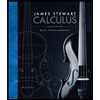 Calculus: Early TranscendentalsCalculusISBN:9781285741550Author:James StewartPublisher:Cengage Learning
Calculus: Early TranscendentalsCalculusISBN:9781285741550Author:James StewartPublisher:Cengage Learning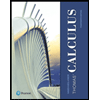 Thomas' Calculus (14th Edition)CalculusISBN:9780134438986Author:Joel R. Hass, Christopher E. Heil, Maurice D. WeirPublisher:PEARSON
Thomas' Calculus (14th Edition)CalculusISBN:9780134438986Author:Joel R. Hass, Christopher E. Heil, Maurice D. WeirPublisher:PEARSON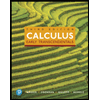 Calculus: Early Transcendentals (3rd Edition)CalculusISBN:9780134763644Author:William L. Briggs, Lyle Cochran, Bernard Gillett, Eric SchulzPublisher:PEARSON
Calculus: Early Transcendentals (3rd Edition)CalculusISBN:9780134763644Author:William L. Briggs, Lyle Cochran, Bernard Gillett, Eric SchulzPublisher:PEARSON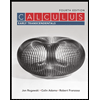 Calculus: Early TranscendentalsCalculusISBN:9781319050740Author:Jon Rogawski, Colin Adams, Robert FranzosaPublisher:W. H. Freeman
Calculus: Early TranscendentalsCalculusISBN:9781319050740Author:Jon Rogawski, Colin Adams, Robert FranzosaPublisher:W. H. Freeman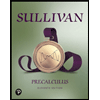
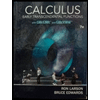 Calculus: Early Transcendental FunctionsCalculusISBN:9781337552516Author:Ron Larson, Bruce H. EdwardsPublisher:Cengage Learning
Calculus: Early Transcendental FunctionsCalculusISBN:9781337552516Author:Ron Larson, Bruce H. EdwardsPublisher:Cengage Learning

Calculus: Early Transcendentals
Calculus
ISBN:9781285741550
Author:James Stewart
Publisher:Cengage Learning

Thomas' Calculus (14th Edition)
Calculus
ISBN:9780134438986
Author:Joel R. Hass, Christopher E. Heil, Maurice D. Weir
Publisher:PEARSON

Calculus: Early Transcendentals (3rd Edition)
Calculus
ISBN:9780134763644
Author:William L. Briggs, Lyle Cochran, Bernard Gillett, Eric Schulz
Publisher:PEARSON

Calculus: Early Transcendentals
Calculus
ISBN:9781319050740
Author:Jon Rogawski, Colin Adams, Robert Franzosa
Publisher:W. H. Freeman


Calculus: Early Transcendental Functions
Calculus
ISBN:9781337552516
Author:Ron Larson, Bruce H. Edwards
Publisher:Cengage Learning
Double and Triple Integrals; Author: Professor Dave Explains;https://www.youtube.com/watch?v=UubU3U2C8WM;License: Standard YouTube License, CC-BY